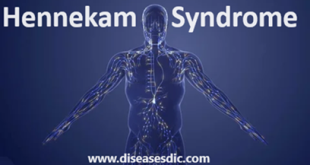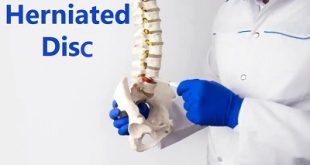Definition
Hypothermia is a medical condition. It occurs when you are exposed to bitter cold for a long time. Normal body temperature is 98.6°F. You have hypothermia if your body temperature drops below 95°F. Hypothermia also can occur in temperatures above 40°F. This is usually due to a person being wet, sweaty, or trapped in cold water. It is dangerous and life threatening. Most people don’t know they have it until it’s too late. If left untreated, hypothermia can cause a heart attack, liver damage, kidney failure, or death.
Hypothermia is different from frostbite. You can have frostbite by itself or with hypothermia. It depends on the type. Frostbite is an injury you get when a part of your body freezes. Common locations of frostbite are your nose, ears, fingers, and toes. With frostbite, your body parts can be numb, stiff, and/or white or grayish-yellow. The effects can be long-term for severe injuries. It may require amputation. However, hypothermia is more serious and requires urgent medical care.
Types of Hypothermia
There are three general types of accidental hypothermia:
- Acute exposure to cold, such as immersion in cold water or getting caught in the snow. This is worse than simply being out in cold weather.
- Fatigue or other lack of metabolic action that doesn’t produce sufficient heat, including intoxication with alcohol or malnutrition.
- Chronic exposure to mild or moderate cold temperatures without a break. Even chatting too long outside without a jacket on a cool autumn evening is enough to develop mild hypothermia, even though it is also easily treated.
Hypothermia risk factors
Factors that may increase a person’s susceptibility to hypothermia include:
Children
Small children are at risk of hypothermia because they are unable to protect themselves in varied environmental conditions. They also have a faster rate of heat loss than adults. Due to their large head relative to their body, they also need their heads covered to prevent significant heat loss.
Old age
In the elderly, the ability to notice changes in temperature is impaired due to the loss of nerve endings to the skin. They also have less fat, which has an insulating function, and a lower metabolic rate, and so generate less heat themselves. Social factors also play a part, as the elderly are more likely to be reluctant to use heating for economic reasons, and they may be socially isolated so can be alone for long periods of time with no one noticing as they deteriorate.
Dementia or immobilising illness
Anybody who is unable to look after themselves independently, either physically or cognitively, is at risk of hypothermia. People with dementia can be particularly at risk if they wander off in cold conditions without having protected themselves with appropriate clothing first.
Alcohol and other drugs
Alcohol makes people feel cosy because it relaxes the blood vessels, allowing more blood to flow near the skin, providing a flushed appearance and a warm sensation. This also puts people who are drunk at significant risk of hypothermia if they are outside in cold weather, as this increases the rate of heat loss. It also slows down the metabolism, so slows down internal heat generation. Alcohol also impairs judgement, so the person is less likely to recognise the environment and their own physical condition, and less likely to take protective measures against heat loss. This is also a concern with any other mind-altering substance.
Water immersion
People who spend any time immersed in water that is colder than body temperature will suffer significant heat loss. The other person at risk is anyone who may have been in wet clothes for a prolonged period, either due to incontinence or sweating.
Causes of Hypothermia
Anyone who spends time hiking, backpacking or exploring the outdoors should, particulalry in winter, should understand the symptoms of hypothermia. Knowing the symptoms and how to treat them may save you or someone else’s life.
When hiking or camping there are a number of ways to fall victim to hypothermia. However, there are a few common ways that seem to hit hikers the most:
- Wearing clothes that simply are not warm enough for the cold weather.
- Falls into an icy stream or lake.
- Simply being unable to get out of wet clothes and get to some place warm.
- Merely staying out in the cold for too long of a period of time can lead to hypothermia.
It is easy to become hypothermic without ever noticing it. Shivering is typically the first thing you will notice – it is simply your body’s automatic defense against cold temperatures, it’s an attempt to warm itself.
Hypothermia symptoms
Hypothermia can be distinguished into three stages – mild, moderate or severe. The signs and symptoms of hypothermia can be approximately grouped with the temperature ranges of the different stages:
For mild hypothermia (35-32 oC), signs and symptoms include:
- Pale and cool to touch as blood vessels constrict in the skin
- Numbness in the extremities
- Sluggish responses, drowsiness or lethargic
- Shivering
- Increased heart rate and breathing.
For moderate hypothermia (32-28 oC), signs and symptoms include:
- Decreasing conscious state
- May have been incontinent of urine as a result of an increased workload on the kidneys related to blood being shunted to the major organs
- No longer shivering
- Slowed heart rate, breathing rate and low blood pressure.
For severe hypothermia (below 28 oC), signs and symptoms include:
- Unconscious and no longer responding
- The heart beats more slowly and may become irregular before ultimately stopping if the person gets too cold
- No response to light in the pupil of the eye
- rigid muscles – the person might feel like they are in rigor mortis
- pulses and respiratory effort may be present but hard to detect.
Hypothermia symptoms
Complications of Hypothermia
People who develop hypothermia because of exposure to cold weather or cold water are also vulnerable to other cold-related injuries, including:
- Freezing of body tissues (frostbite)
- Decay and death of tissue resulting from an interruption in blood flow (gangrene)
Diagnosis and test
In severe cases of hypothermia, diagnosis and treatment usually will occur at the same time because it is a medical emergency.
- The doctor will take a history from either the victim, if possible, or from whoever is present. Some vital information includes the length of exposure, the circumstances of recovery, and any past medical problems that may have influenced this episode.
- Symptoms vary, so the final diagnosis depends on the core body temperature. It is never taken by mouth. The temperature may be measured rectally or by a tube placed in the oesophagus. Temperature will be measured continuously, when such devices are available.
- Several blood tests will be performed as hypothermia can affect almost every organ system in the body.
- X-rays may be ordered, and an ECG (electrocardiogram) will be done to look at the electrical activity of the heart. The patient might be placed on a monitor to continuously observe their heart rate and watch for arrhythmias.
Treatment and medications
First, get the person out of the cold source. It is most important to get the person out of the source of cold, while at the same time, protecting that person from the elements. Remove the person to the inside of the pleasure craft’s cabin. If possible, remove the water-drenched clothing and put him/her in a sleeping bag or cover the person with wool blankets. If possible, to prevent further loss of body heat, warm the person’s body gradually by:
- Replacing wet clothing with dry clothing;
- Wrapping the person in blankets;
- Placing dry coverings over the person;
- Covering the person’s head and neck;
- Covering the person with an insulating device and vapour barrier;
- Applying warm, dry objects (40 to 45°C).
Since there is a large amount of body heat loss in these areas, it is important to protect them by covering the head and neck with a cap and scarf. Use or show signals to show distress and need of assistance, if necessary. If the person asks, give him/her warm liquids but do not give the person alcohol or hot stimulants. Do not rub or massage the surface or extremities of the person’s body since this will activate blood circulation and the cold blood from the extremities will return to the vital organs, possibly causing a heart attack. The shock created by the flow of cold blood to the heart could cause this to happen.
Prevention of Hypothermia
- Listen to the weather forecast.
- Plan: schedule warm-up breaks for outdoor workers, hold recess and breaks inside, limit the amount of time you spend outdoors.
- Dress warmly in layers (wind-resistant jacket, mittens, boots, hat and scarf).
- Stay dry (wet clothing chills the body rapidly).
- Get out of the cold as soon as you can if you start feeling cold.
- Alcohol, cigarettes, caffeine and certain medications will increase your susceptibility to cold.
- Hypothermia can occur in the home: ensure there is adequate heating, especially for elderly people. Also, elderly people living on their own should consider wearing a personal emergency response system (PERS) as they are at risk of falls and hypothermia could develop if help is not at hand. The Council on the Ageing (NSW) provides information about PERS via their factsheet
 Diseases Treatments Dictionary This is complete solution to read all diseases treatments Which covers Prevention, Causes, Symptoms, Medical Terms, Drugs, Prescription, Natural Remedies with cures and Treatments. Most of the common diseases were listed in names, split with categories.
Diseases Treatments Dictionary This is complete solution to read all diseases treatments Which covers Prevention, Causes, Symptoms, Medical Terms, Drugs, Prescription, Natural Remedies with cures and Treatments. Most of the common diseases were listed in names, split with categories.







